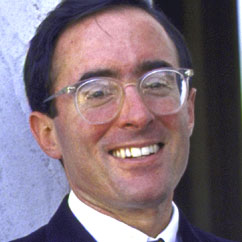
Gets it… but doesn’t…
Columnist and writer Michael Kinsley in the New York Times today opines, You Can’t Sell News by the Slice.
Kinsley, like everyone else, is grappling with the search for the Holy Grail of how to keep newspapers alive.
In the course of his grappling he posts some interesting statistics:
Newspaper readers have never paid for the content (words and photos). What they have paid for is the paper that content is printed on. A week of The Washington Post weighs about eight pounds and costs $1.81 for new subscribers, home-delivered. With newsprint (that’s the paper, not the ink) costing around $750 a metric ton, or 34 cents a pound, Post subscribers are getting almost a dollar’s worth of paper free every week — not to mention the ink, the delivery, etc. The Times is more svelte and more expensive. It might even have a viable business model if it could sell the paper with nothing written on it.
The problem, Kinsley writes, is that even if you charged every online user $2 a month, that would only bring in $24 million, a drop in the bucket to The Washington Post or The New York Times.
What is killing The Times, The Post, The Trib and every other paper in the country is not so much the declining revenues from advertising (though that is a problem) but rather the cost of running the paper under the old, conventional model.
85% of the cost of a newspaper is the physical reality of the paper. The paper, the ink, the presses, the buildings, the delivery of a physical item to each and every reader’s kitchen table each morning.
This costs a fortune.
And it is no longer necessary.
It is, in fact, a burden.
Sell the building, sell the trucks, close down the presses, lose the pressmen, the ink, the paper and all the rest.
Cut your costs to the bone.
And then take out the bones.
What do you have?
A very profitable operation.
Smaller, for sure, but profitable.
And suddenly you have global distribution to more than 2 billion readers.
That’s a lot.
Apparently more people read The Guardian online in the US than buy the physical paper in the UK daily.
That’s what used to be The Manchester Guardian.
Editor Alan Rusbridger is rapidly turning what was once a local English paper into the best global newspaper in the world. Very far indeed from it’s Manchester origins. You can’t hardly find a Manchester local story in the paper, but you do find some of the very best reporting and writing in the English-speaking world.
When it comes time to cut costs because revenue is down, it is an act of suicide to cut the editorial side. Why do you think people read the paper in the first place?
What should be cut are the vestiges of an old and unworkable business model for distributing the news.
Paper.
The solution to the crisis facing newspapers today?
More of the news…. less of the paper.

but what is the guardian doing with video?
it’s almost all AP, Reuters or commercial productions. Look closely – they plaster “Guardian UK” over all the clips they feature – but very few are produced in house
What happened to all the VJ stuff that they were experimenting with heavily a year or so back?
If you haven’t already, you should also check out TIME magazine this past week. The cover: How to Save Your Newspaper http://www.time.com/time/business/article/0,8599,1877191,00.html
The first sentence reads: “During the past few months, the crisis in journalism has reached meltdown proportions.”
Yet the article offered an economic model/solution: Start charging for content online, asap. Quit giving online content away for free. How? The future economic model involves “micropayments.” Whenever you click on anything online (content) a micro payment will be subtracted from the viewers’ computer bank account, and sent to the content creator. It might be a penny, or less, or more. But it won’t be FREE.
That keeps deserving content creators creating content.
The real problem is “content creators” generally don’t have a clue how to do much else besides creating content.
If they knew how to sell it they might have half a chance!
But most don’t.
As you know Michael the Guardian is owned by the Scott Trust whose mission statement is “to secure the financial and editorial independence of The Guardian in perpetuity”.
Guardian Media Group made a £97.7m pretax profit in the year to April 2007, on sales of £716m. Within that, The Guardian, Observer and associated websites made a loss of £14.3m.
Forgive me more a case of wrong facts right conclusion
S
lest I be down on the guardian – I should point out that it is home to Shehani Fernando – consistent stream of top notch pieces.
hhttp://www.guardian.co.uk/profile/shehanifernando
I dont know what to write on the conclusion! HELP ME!
What should I write for the conclusion about kids allowances?